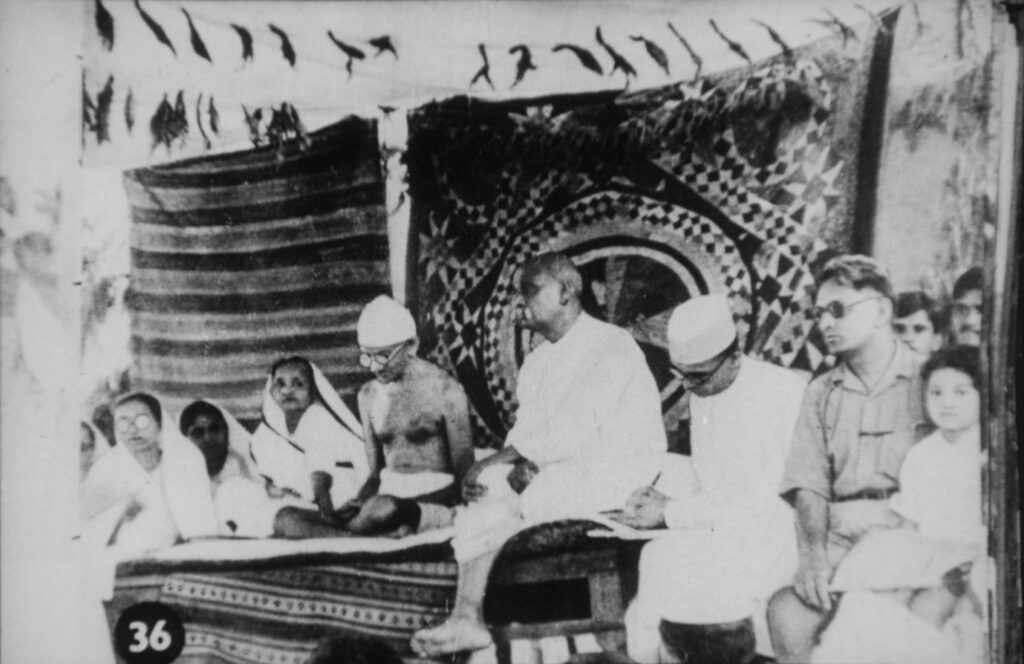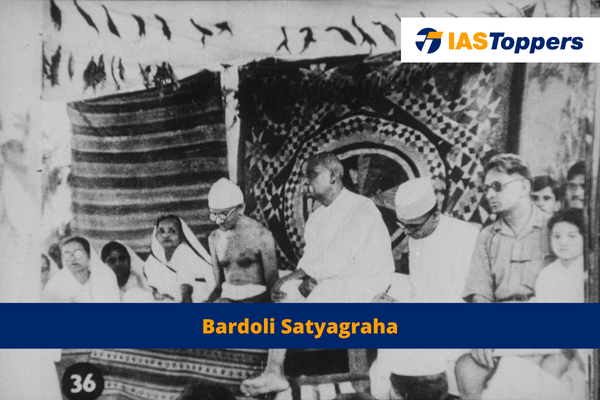Bardoli Satyagraha is a movement ignited when the authorities decided to increase land revenue by 30% in 1926. Against this increase in land revenue, Congress leaders protested. It led to the formation of a Bardoli Inquiry Committee, which deemed the revenue hike unjustified. Vallabhbhai Patel was appointed to lead the movement. He earned the title “Sardar” from the women of Bardoli.
Bardoli Satyagraha will be helpful for UPSC IAS Exam preparation. GS Paper-1 History.
Table of Content
- Background
- What was Bardoli Satyagraha?
- Course of the Satyagraha
- Outcome
- Criticism
- Conclusion
Background
- In 1925, the taluka of Bardoli in Gujarat’s Surat district experienced economic difficulties.
- Despite facing calamities, the government of the Bombay Presidency decided to increase the tax rate by 30% that year.
- Civic groups submitted petitions requesting the cancellation of the tax raise, but their pleas were disregarded.
- The farmers were in a dire situation, struggling to meet the tax obligations with limited property and crops, leaving them with insufficient resources for sustenance.

What was Bardoli Satyagraha?
- The Bardoli Satyagraha was a protest and nationalist movement in India by farmers against the colonial government’s higher taxation.
- The farmers demanded the revocation of a 22% tax increase imposed in the Bombay Presidency.
- The movement commenced on 12 June 1928.
- Sardar Vallabhbhai Patel emerged as its prominent leader and the success of the movement elevated him as one of the key figures in the independence struggle.
Course of the Satyagraha
- Farmers sought assistance from Vallabhbhai Patel in their time of need.
- Patel candidly addressed a group of farmers, emphasizing the importance of fully understanding the implications of a revolt.
- He made it clear that he would only lead them if all the villages involved were in agreement and understood the situation.
- Patel wrote a letter to the Governor of Bombay, requesting a reduction in taxes due to the ongoing calamities.
- However, the Governor disregarded the letter and instead announced the date for tax collection.
- Patel instructed all the farmers in Bardoli taluka to refuse payment of their taxes.
- Collaborating with Narhari Parikh, Ravi Shankar Vyas, and Mohanlal Pandya, he divided Bardoli into multiple zones, appointing leaders and assigning specific volunteers to each zone.
- He emphasized the importance of nonviolence to the farmers.
- He advised them not to retaliate physically against any provocation or aggressive actions from officials.
- The farmers received unwavering support from their fellow compatriots in Gujarat.
- The government made a declaration, vowing to crush the revolt.
- The government assembled groups of Pathans from northwest India, along with tax inspectors, to confiscate the villagers’ property and instil fear in them.
- Auctions were initiated for houses and lands, but there was no interest from anyone in Gujarat or elsewhere in India to purchase them.
- However, some affluent individuals from Bombay showed interest in buying certain parcels of land.
- In August 1928, Mahatma Gandhi arrived in Bardoli, to provide support in case of an emergency.
- Outraged by the mistreatment of the protesting farmers, members of the legislative council in Bombay and across India resigned from their positions.
- They openly expressed their solidarity with the farmers.
- The government faced severe criticism, even from within its own offices.
Outcome
- In 1928, a Parsi member of the Bombay government successfully mediated an agreement.
- The agreement entailed-
- Restoration of confiscated lands and properties,
- Cancellation of revenue payment for the year, and
- Postponement of the 22% raise until the following year.
- The government had commissioned the Maxwell-Broomfield Commission to investigate the issue.
- It was determined that the tax increase would be reduced to a mere 6.03%.
Criticism
- The focus of the movement revolved primarily around the challenges faced by wealthy and middle-class farmers.
- The satyagraha neglects the hardships of impoverished farmers.
- The issue of Hali Pratha was not raised or addressed during the Satyagraha.
- Hali Pratha is a form of bonded labour system.
- It served as a test for the effectiveness of Satyagraha as a method of freedom struggle.
- However, the fundamental problems faced by the peasants remained unattended.
Conclusion
Sardar Vallabhbhai Patel attributed the victory to Gandhi’s teachings and the unwavering determination of the farmers. This satyagraha earned him widespread recognition for his crucial leadership. The women of Bardoli played a pivotal role by conferring upon him the title “Sardar,” meaning Chief or Leader in Gujarati and other Indian languages. Bardoli marked a transformative moment, propelling Sardar Patel to become one of India’s most revered leaders.
Ref:Source-1
| Other Articles in History & Culture | |
| Ryotwari System | Land Revenue Systems in British India |
| Mahalwari System | Permanent Settlement System |
| Champaran Satyagraha | Indigo Revolt in Bengal |
FAQs (Frequently Asked Questions)
Who was the leader of Bardoli Satyagraha?
Sardar Vallabh Bhai Patel led the Bardoli Satyagraha. He became a prominent leader in the Indian Freedom Struggle after the success of Bardoli Satyagraha.
Who launched the Bardoli Satyagraha in 1928?
Sardar Vallabh Bhai Patel launched the Bardoli Satyagraha in 1928.


